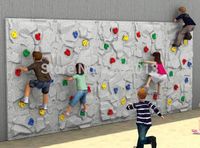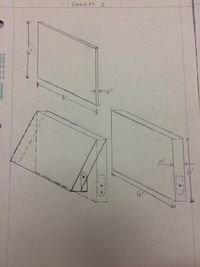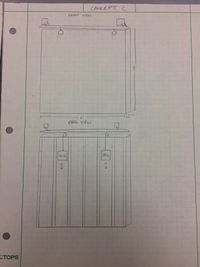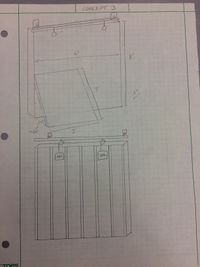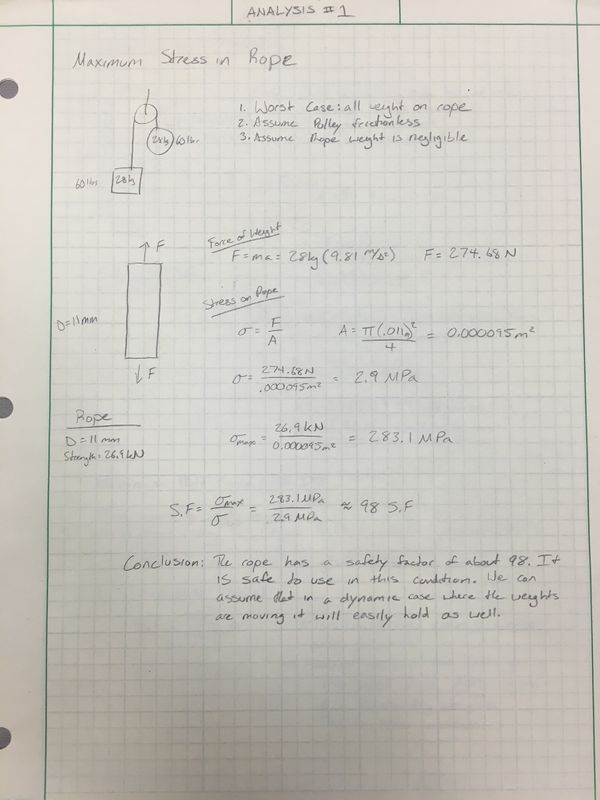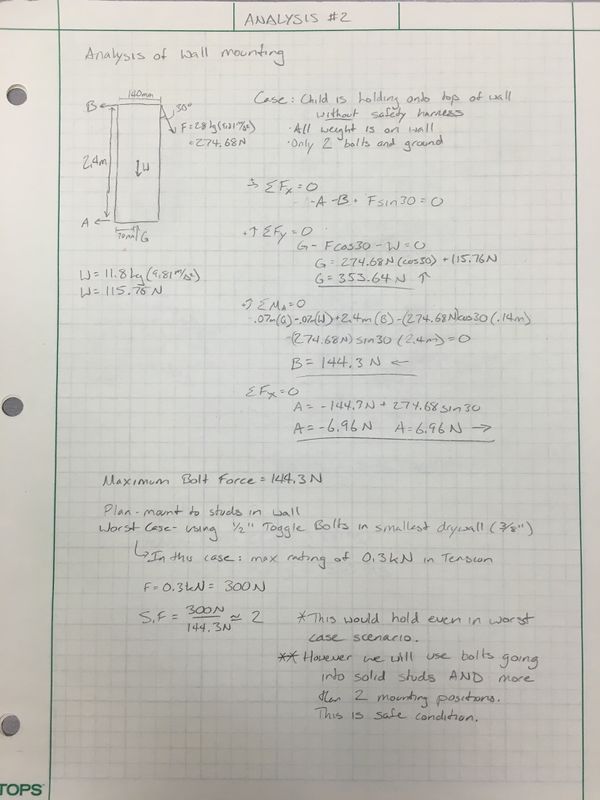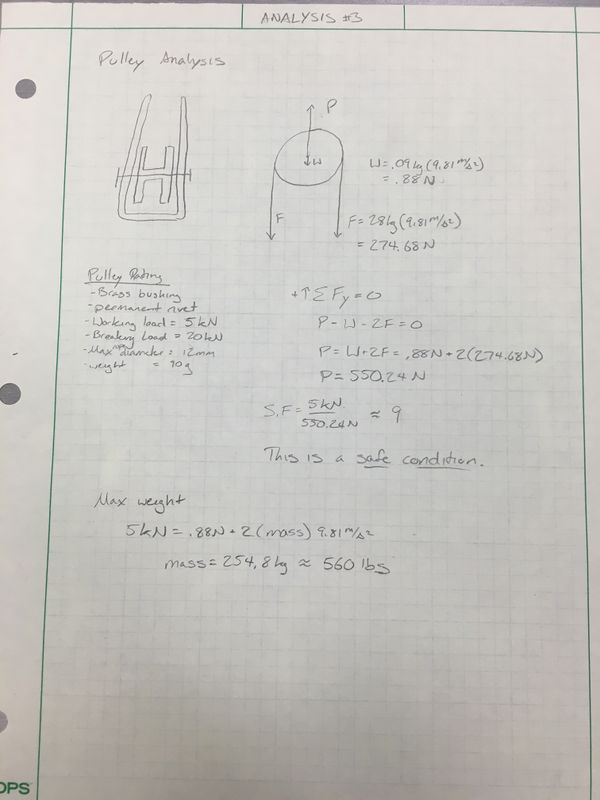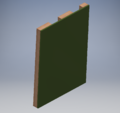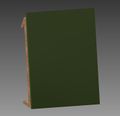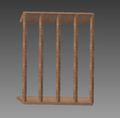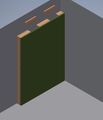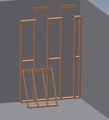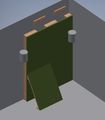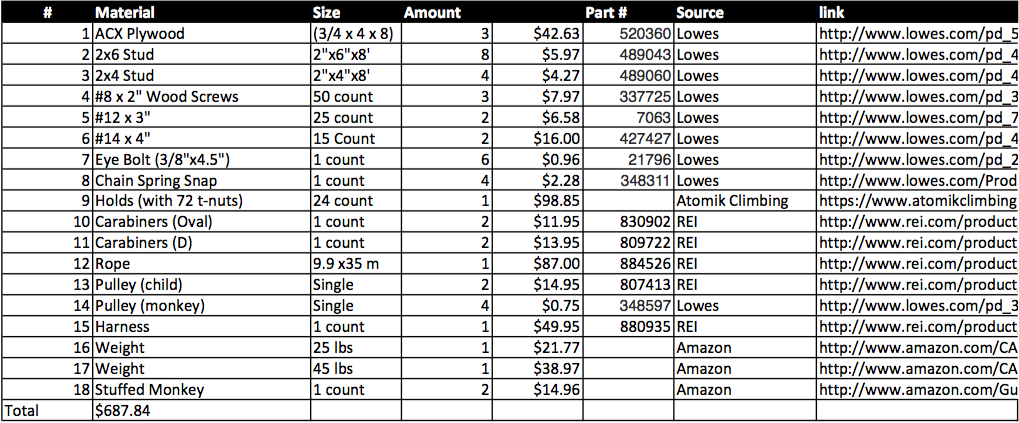Assistive climbing rock wall 1
Abstract
To design an assistive rock wall to aid muscular development in children with special needs.
Team members
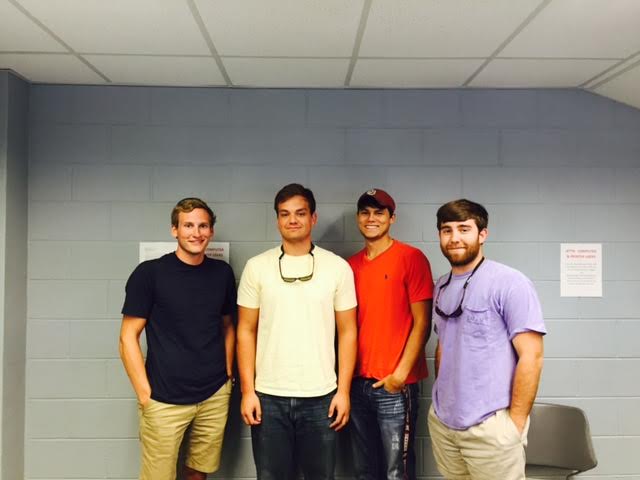
Cody Jernigan, Cody Jones, Andrew Stoddard, Josh Walker
Acknowledge help of Rene' Canfield
Problem Statement/overview of the need
Rene' Canfield, a local therapist, has children with physical limitations in need of muscular development. She wants an assistive rock wall to emphasize heavy work for 2-5 year old children. Motivating children to enjoy physical therapy is an important objective for Rene'.
Design Specifications
1. Able to support 2-5 year old children up to 60 lbs.
2. Fit in playground (6'x9'x3').
3. System to aid children in physical therapy.
4. Reward based therapy.
5. Sturdy and safe for use.
Background research
Rock walls for children are not an uncommon thing. Many parents see that rock climbing can have huge muscular benefits while still being fun. In fact, rock wall hand holds are common on the internet and easy to find. In addition, there are plenty of instructional websites for creating a rock wall inside a home. However, where these fall short is that they do not aid the children. This is typically not a problem for the average child, but we are dealing with children with muscular deficiencies. Our wall needs to be able to progressively aid a child up the wall so that they can further develop their muscles.
Conceptual Design
We began with two very different methods of aiding the children. One changes the difficulty of the wall, and the other changes how much aid they get going up it. We progressed to Concept 3 which is a combination of both ideas, and it makes for a very multi-purpose wall.
Design Concept 1
- This first design uses varying degrees of angle as the method of reducing effort up the wall. The entire wall is pivoted at the top and can be adjusted based on the ability of the child. This wall is a smaller 6' wall so that the therapist can be next to the children the entire way.
- The advantages of this wall include: ease of use (no harness involved), size, collapsable, and adjustability. Some disadvantages include: ergonomics for therapist, actual advantage for children, and excitement for children.
Design Concept 2
- This second design uses assistive weight to aid the child up the wall. It uses a pulley system to offset the child's weight so that it is easier to climb the wall. There will be two weights so that different children (with different weight) can use the wall, and as the child improves in ability they can change pulley systems.
- The advantages of this wall include: excitement, complete ability to adjust aid, safety, and size. Some disadvantages include: complexity of pulley and weights, and harness system.
Design Concept 3
- The third design uses a combination of both previous concepts. It has a small portion that is on an angle for unassisted climbing, and it has a vertical portion designed to be used with a pulley/harness system. This allows for the therapist to use the angled portion for smaller children and when she does not have time for the harnesses, while still allowing for more challenging climbing for older children up the rest of the wall.
- The advantages of this wall include: multi-functional, safety, and excitement. Some disadvantages include: complexity of pulley and weights, and harness system.
Evaluate concepts/select candidate
| Ease of Use | Aid to Child | Safety | Multi-functionality | Total (Out of 40) | |
|---|---|---|---|---|---|
| Concept 1 | 10 | 5 | 3 | 5 | 23 |
| Concept 2 | 5 | 10 | 10 | 5 | 30 |
| Concept 3 | 5 | 10 | 10 | 10 | 35 |
- Scores out of 10
Detailed Design
Description of selected design
The winning design selected is concept 3 from above. The idea integrates one static and one hinged angled section. One that is vertical to allow maximum strengthening for child and an angled section that will require less force exertion by child. Children using the rock wall will be supported by a child’s climbing harness attached to a pulley system. There will be interchangeable weights to help children with climbing dependent on weight of the child as well as their need for assistance. For each section there will be a toy monkey that will climb with the child to give incentive and make the rock wall a more rewarding exercise.
Detailed description of selected design
The rock wall itself will be constructed of 2 4x8 ¾” thick sheets of plywood with pressure treated 2x6’s for bracing on the back side. The pulley system will consist of 1-1/2” zinc plated fixed single pulleys. The rope threaded through the pulleys is 3/8” climbing rope and attaches to the harness; which is, rated for a max weight of 88 pounds to support children ages 2-6. The hand holds are smaller sized for children’s hands.
Analysis
We focused analysis on the three areas vital to child safety. The first analysis is of the stress in the rope with maximum child weight. The second is for the wall mounts to determine the minimum fastener requirements. Finally, the third is an analysis of the pulley.
Engineering analysis 1
This first analysis looks at the tensile stress that develops in the climbing rope. It takes into consideration the worst case scenario of max child weight(60lbs) with an equal counterweight. This also assumes that all of the child's weight is hanging on the rope while, in reality, some will be on the wall and some on the rope.
Engineering analysis 2
The second analysis is of the wall mounts. We wanted to know what the minimum force to hold the rock wall onto the drywall would be with the child hanging all of his/her weight off of it. This analysis shows us what the minimum requirement is. However, our design will consist of threaded bolts into studs in the wall. According to this analysis, these will be plenty of force to hold the wall in place.
Engineering analysis 3
The final analysis looks at the pulley holding the rope and subsequently child on the wall. This pulley is subjected to not only the child's weight but also the counterbalance weight so we wanted to make sure the safety margin was large. NOTE: Eye bolt strength in shear direction was taken into consideration. Research found that 3/8" eye bolt can handle about 930 N in the Z-direction. Therefore we have a safety factor of about 1.7 for the eye bolt.
CAD Drawings
Bill of Materials
Assembly Instructions
- First take the plywood that was purchased and cut off 2 ft. of the length. The plywood should now be a 4'X 6' sheet and do the same to other piece of plywood. The plywood should be placed were it is now 8'X 6'.
- Next, take 2 pieces of the 2"X 6" X 8' and cut off 3" total and screw them in at the top and bottom (horizontally) of the plywood. Now 3 pieces will need to be cut at 93" and screwed (vertically) along the backside of the plywood (in between the the horizontally laid 2"X 6"). Then 3 pieces of 2"X 6" will be on the inside of the horizontally laid 2"x 6" and all of these boards will have to be screwed in. There will need to be boards cross placed between 3 of these boards.
- Third, take a two 2"x 4" and cut them in half (4 ft.) and place all 4 pieces on the back side of the two extra pieces of plywood (vertically) and cut a 45* angle on both ends of the 2"x 4". These 2"x 4"s will have to be screwed into the plywood.
- Then take another 2"x 4" and cut two pieces at 45". Place these two pieces of wood on the inside of the previous plywood (4'x 4') at the top and bottom and screw in. Lastly you will have to screw in the 4'x 4' plywood into the the big piece, 8'x 6' then the big piece of plywood will have to be screwed in to the wall.
- Lastly, the climb holds will need to be screwed into the plywood and the pulley's will have to be screwed in and placed between the rock wall and the wall.
Fabrication Process
Insert pictures of fabrication process
Testing and implementation
Describe testing, delivery, how used/received by the family
Photos of Completed design
Insert pictures of the final product
Instructions for safe use
Provide a clear summary of safe use for the family. Do not use the device unless supervised by an adult that has been fully understood the safe use of this product.
